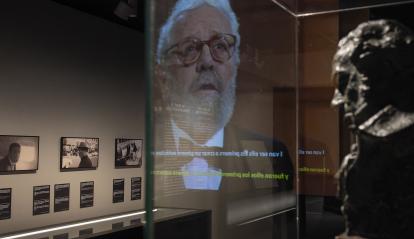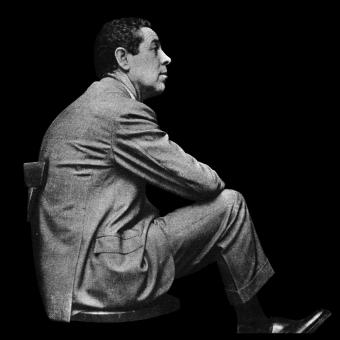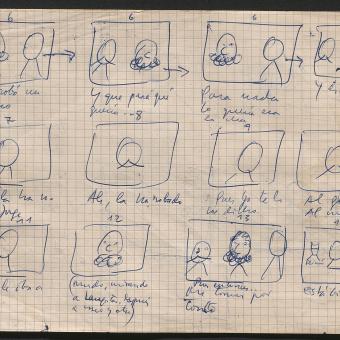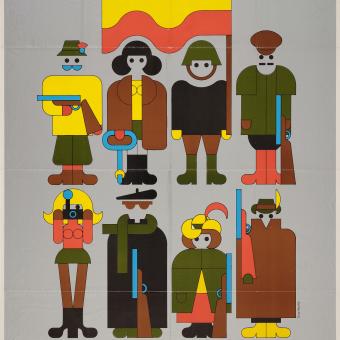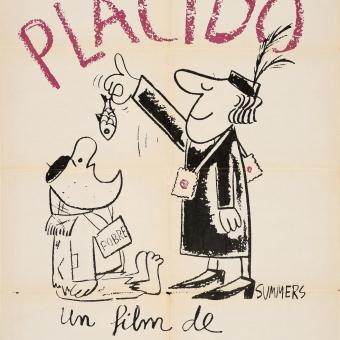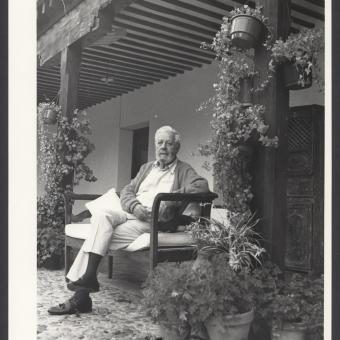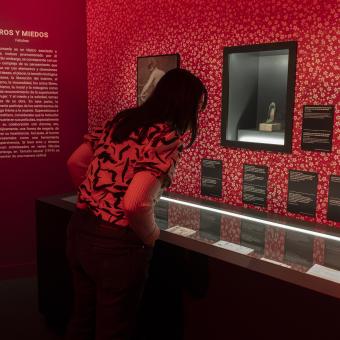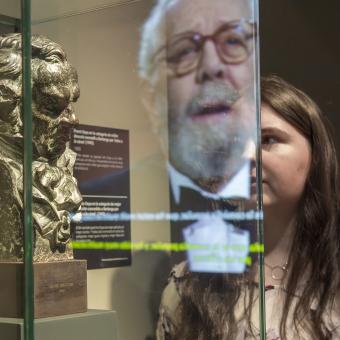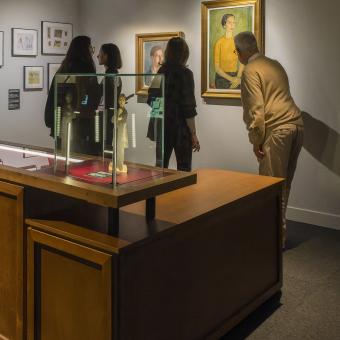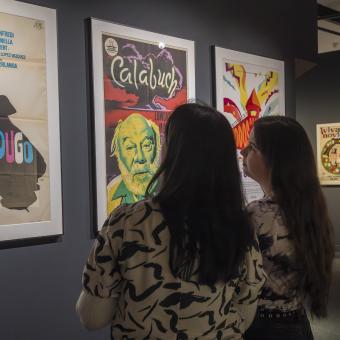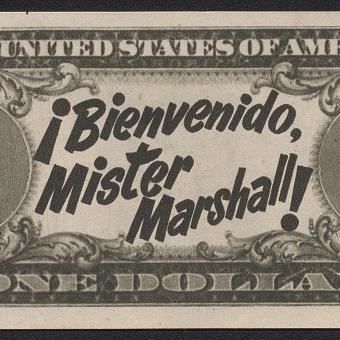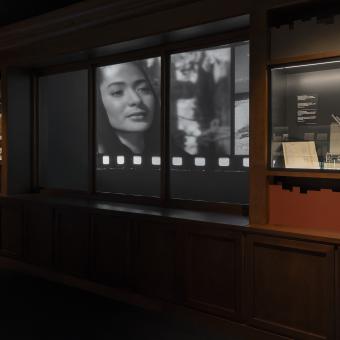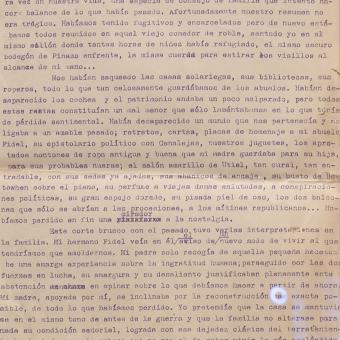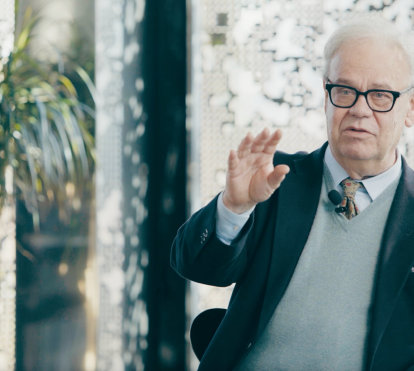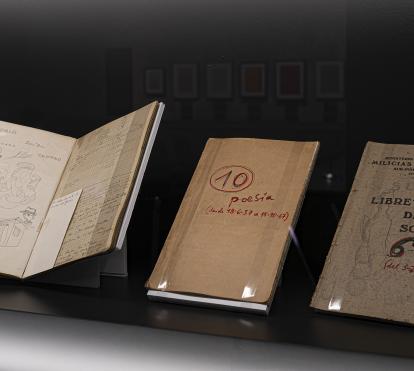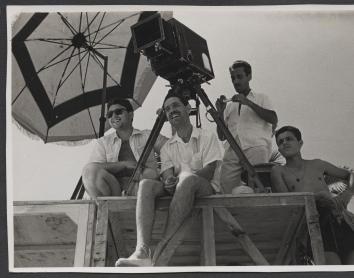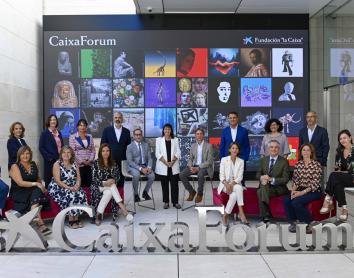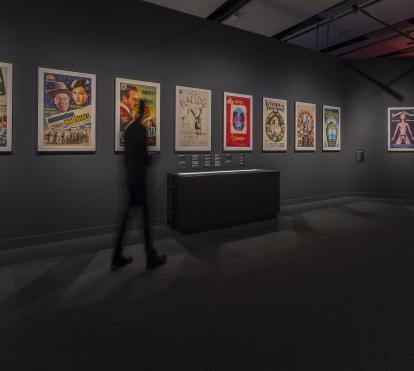
Interior Berlanga. CaixaForum València opens this exhibition, which offers a journey through the career of the filmmaker Luis García-Berlanga based on projections, objects and documents from his personal archive, many of which have never been seen before. The exhibition brings together more than 300 original pieces in a meticulously cinematographic scenography that invites visitors to discover the many facets of one of the most important creators of the 20th century in Europe.
The deputy director general of the ”la Caixa” Foundation, Elisa Durán; the curators of the exhibition, Sol Carnicero and Bernardo Sánchez Salas; the content advisor and director of the exhibition audiovisuals, José Luis García-Berlanga, and the director of CaixaForum València, Álvaro Borrás, have today presented Interior Berlanga.
Berlanga is one of Spain’s most popular and internationally renowned film directors, the author of such classics as Bienvenido, Mister Marshall (1953), Plácido (1961), El verdugo (1963), La escopeta nacional (1978), Patrimonio nacional (1981) and Todos a la cárcel (1993). As of this Thursday, he is also the protagonist of a major exhibition at CaixaForum València.

The exhibition offers an intimate and never-before-explained look at Luis García-Berlanga (1921-2010), an unprecedented approach thanks to the work of cataloguing and digitising Berlanga’s private archive which, following its acquisition for state public collections by the Ministry of Culture, will be made available to the public for the first time.
It will reveal to the public at large – from the most demanding and knowledgeable Berlanga fans to the youngest and most distant – the figure of the filmmaker who propelled Spanish cinema and transformed it with his biting irony and satires on social and political issues.
The display is conceived as a long sequence shot following the director’s unmistakable narrative style, with careful cinematographic staging by set designer Carles Berga, and is divided into an introduction and seven areas:
- Introduction
- “Cabinet. Refuge, home and family”
- «L’escola de la història. Episodis nacionals»
- “The school of history. National episodes”
- “Ill-prepared for this world of cinema. The life of films”
- “The tour of the Austro-Hungarian. Memories from here and there”
- “Eros and fears. Fetishes”
- “Inventory and cremá. The falla”
- “Berlanguian. Academic session”
According to José Luis García-Berlanga, filmmaker, chef and son of the film director, “Interior Berlanga is an unusual project”. “The exhibition my father would have liked to see. We’ll discover a lot of unpublished things.” Because the exhibition is based on an archive that his father kept since he was a child: his school notebooks, the letters he wrote to his parents when he was at boarding school, and also the very personal relationships that have remained untold by what we have seen on screen. “A very intimate Berlanga will be unveiled, complementing and expanding the public persona,” adds his son.
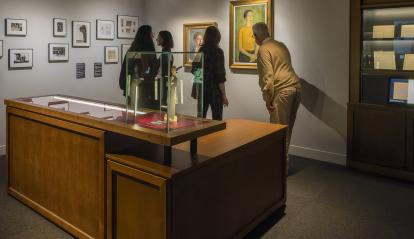
The title, Interior Berlanga, Berlanga, abounds in this idea. It is a journey through what nobody knew about this filmmaker, all the items he kept in his studio. After his death, everything was deposited in more than 70 boxes that have been opened, catalogued, digitised and studied in a project that began in September 2022 thanks to an initiative of the ”la Caixa” Foundation and the collaboration of the Filmoteca Española (Spanish Film
Archive), which safeguards the archive as a body reporting to the Ministry of Culture responsible for preserving Spanish film heritage and which is lending the pieces for the exhibition. “That archive, which is wonderful, is not just about my father: it’s about Spain throughout the 20th century,” says Berlanga, who has been in charge of the audiovisuals shown in each area of the exhibition.
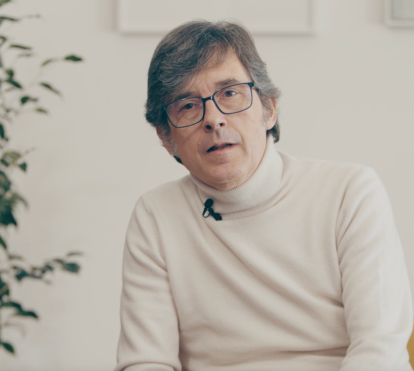
The curators, Sol Carnicero and Bernardo Sánchez Salas, have a long career in the audiovisual world. Sol Carnicero was production director of several films by Luis García-Berlanga, while Bernardo Sánchez Salas is a teacher, scriptwriter and playwright, author of the theatrical version of El verdugo (1963) in 2001 and of the stage drama Teatro Berlanga (2021), which brings together several key moments of his cinema, together with tributes and interviews.
The beginnings of the project
“My brothers and I did not know what to do with all the things my father had kept,” recalls his son, José Luis García Berlanga. “I saw a suggestion box on the website of the ”la Caixa” Foundation and wrote: ‘Hello, I’m José Luis García-Berlanga, son of the film director, and I have an archive that I don’t know what to do with.’ And that’s how it all started.”
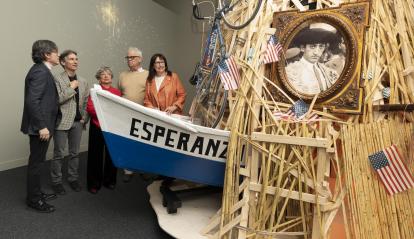
That was five years ago. A visit to the family home in Madrid by the heads of the Culture and Science Department of the ”la Caixa” Foundation allowed them to see the enormous heritage value of the Berlanga archive. The idea was born not only to organise an exhibition, but also to collaborate with the ”la Caixa” Foundation in cataloguing and digitising his legacy. Interior Berlanga is much more than an exhibition: it is the enhancement of patrimony, a collective work in which professionals from various fields and institutions have participated. The aim is to make all this heritage, now public property, accessible online to everyone, which is the joint desire of the Berlanga family, the ”la Caixa” Foundation and the Ministry of Culture.
At the same time, it is an opportunity to enter into the current social debate. At a time of great conflict, Berlanga’s vision helps to understand the dynamics of social groups, to identify vices and virtues and to highlight the value of good people.
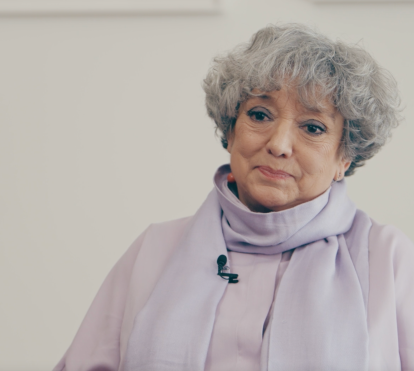
CaixaForum+ will premiere two new documentaries and four emblematic films
On the occasion of the exhibition, the platform has prepared a special programme on this fundamental filmmaker in the history of Spanish cinema. In the coming months, it will release a feature film and a short documentary (both directed by his son, José Luis García-Berlanga), as well as four of his most emblematic films: La escopeta nacional, Moros y cristianos, Nacional III and La boutique. The first of these arrives on the platform today, to coincide with the opening of the exhibition, and can be viewed free of charge until 4 June.
CaixaForum+ is also presenting the exclusive premiere of the original short documentary La mirada de Berlanga. José Luis García-Berlanga directs this sincere tribute to his father with great sensitivity and humour. As the voice-over concludes, “if life is not like films, Berlanga’s films are indeed like life”. In a few months’ time, another documentary will arrive on the platform, in this case a feature film also directed by his son and based on unpublished material, showing us the most intimate side of the Valencian genius.
Beyond the exhibition halls: activities to broaden Berlanga’s perspective
During the months that the exhibition is on show at CaixaForum València, the ”la Caixa” Foundation is offering a series of innovative activities so that all audiences can approach the
great filmmaker’s art from different perspectives. The starting signal will be given this Thursday with a concert by Pablo García-Berlanga, pianist and great-nephew of the director, who will pay tribute to his cult films: through music, the public will be able to relive such classics as Plácido, El verdugo, Calabuch and Bienvenido, Mister Marshall, among many others.
Also of note is the Everything seems Berlanga to me cycle, which includes conferences and round tables with the writer Elvira Lindo, the film director and writer Vicente Molina Foix, the director’s son José Luis García-Berlanga and the curators of the exhibition, Sol Carnicero and Bernardo Sánchez Salas. The centre will also host a dramatised reading of ¡Viva Rusia!, an unpublished screenplay that would have been the fourth part of his national saga.
In addition, family audiences will be able to immerse themselves in Berlanga’s work through the “¡Americanooos!” workshop, where young and old will discover the power of the invisible element of cinema: music. As usual, the cultural centre will also be offering guided tours in various formats. All the detailed information can be found through this link here.
